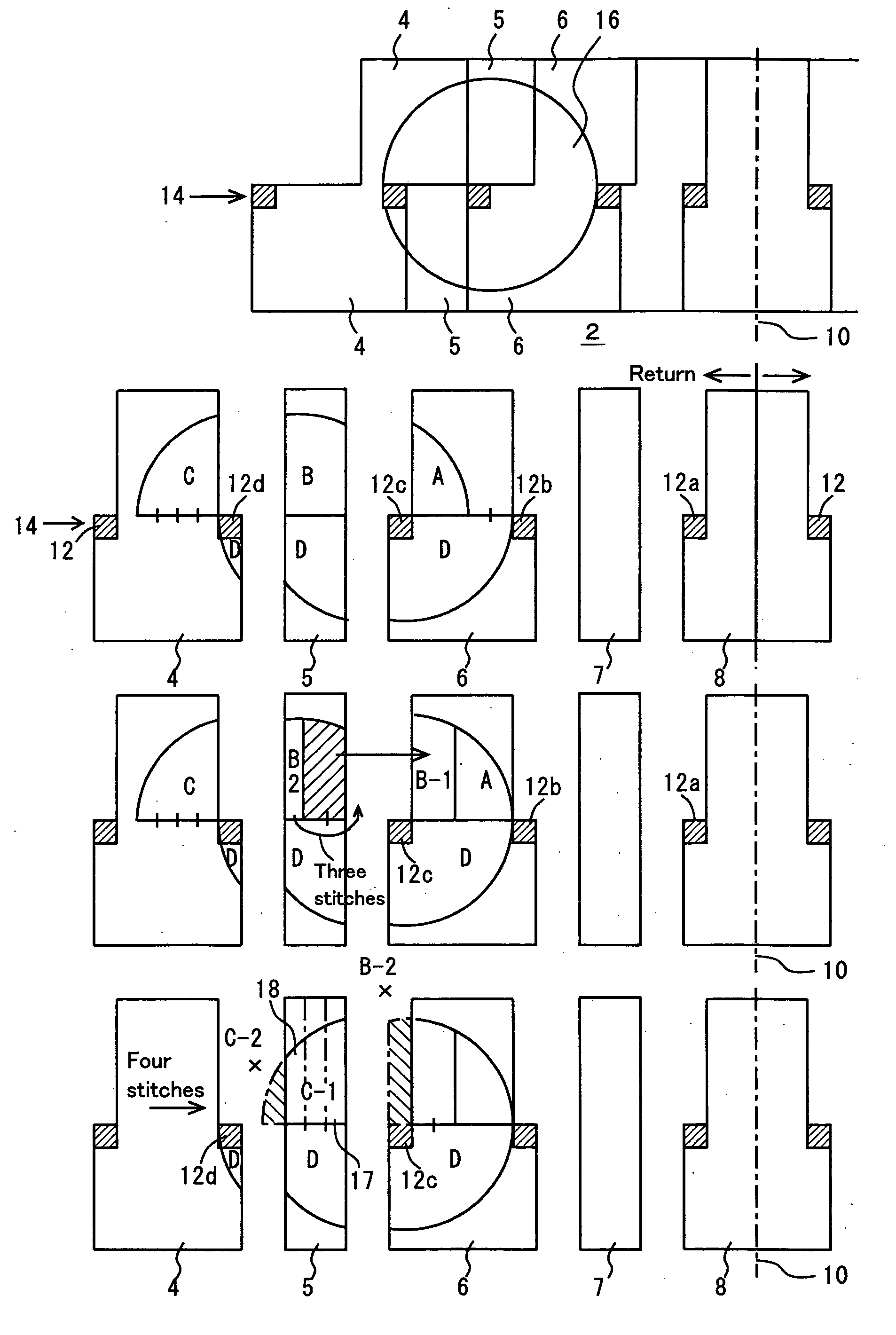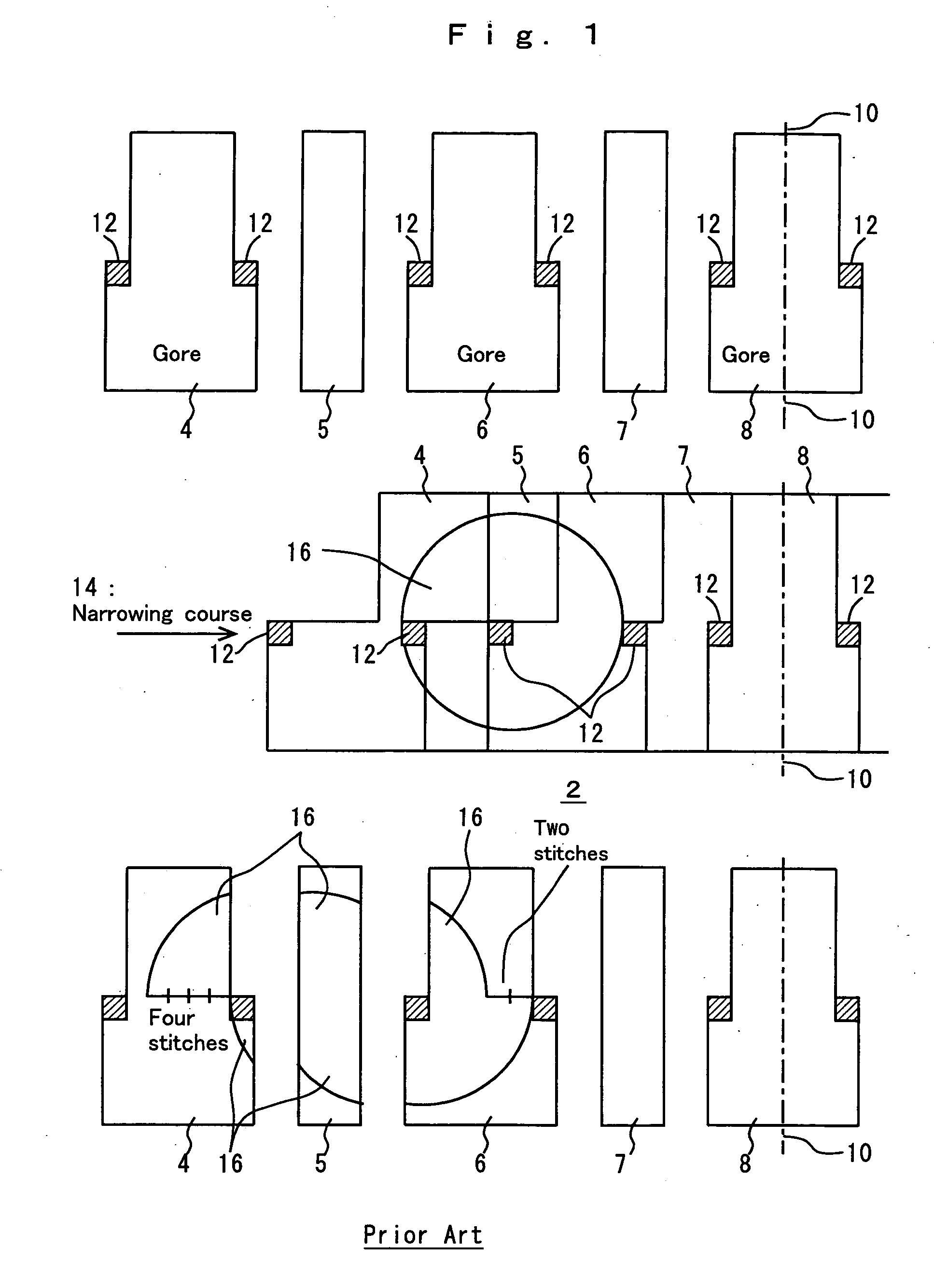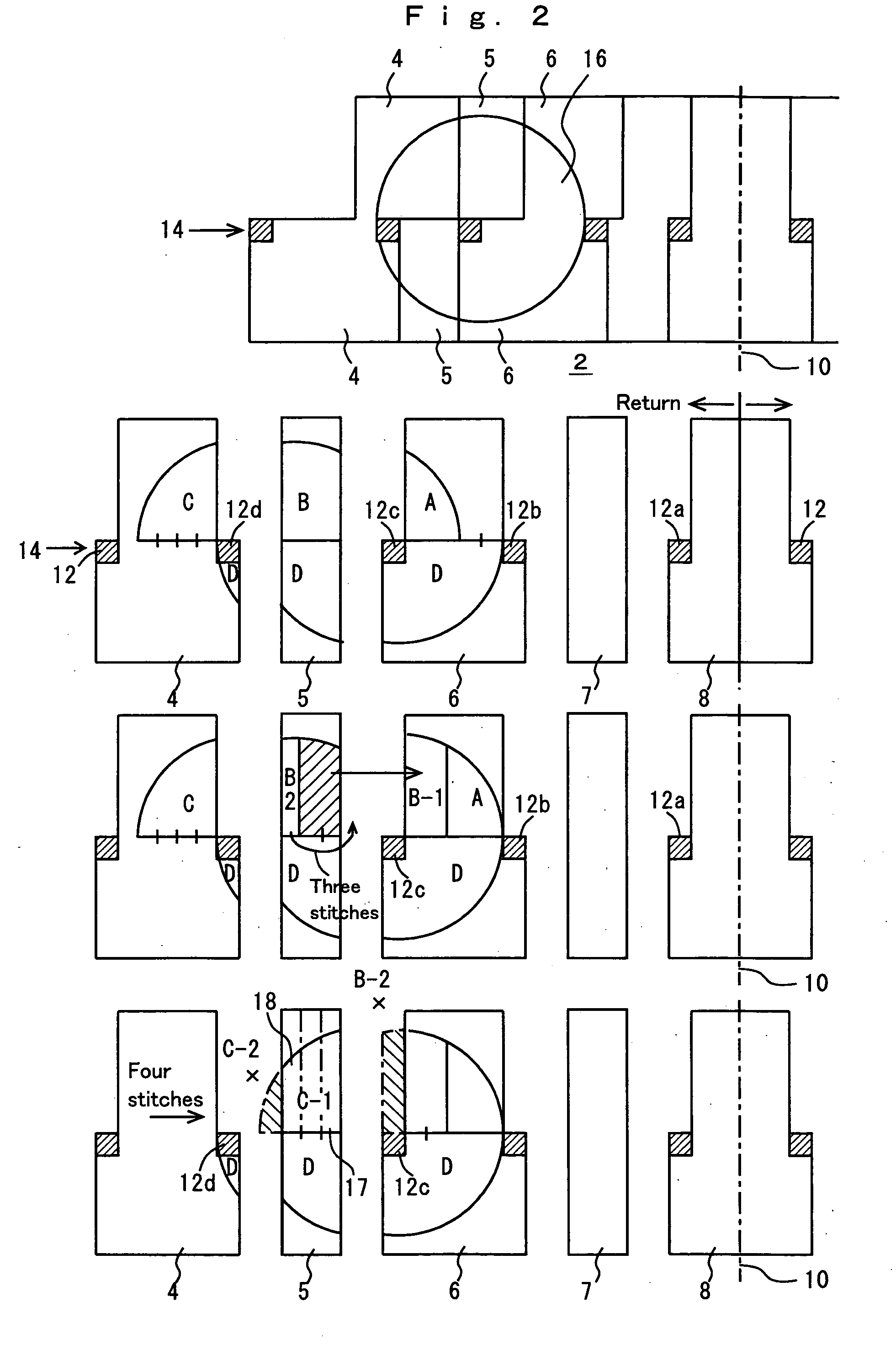Method and device for knit design and program
- Summary
- Abstract
- Description
- Claims
- Application Information
AI Technical Summary
Benefits of technology
Problems solved by technology
Method used
Image
Examples
second embodiment
[0089] The overview of processes in the second embodiment is shown in FIG. 8. In FIG. 8, the constituent elements that are identical to those shown in FIGS. 1 and 2 are labeled with the same reference numeral. As in the cases of FIGS. 1 and 2, it is assumed that a pattern 16 has been inputted. A reference numeral 20 denotes a borderline of the portion of the pattern 16 below the narrowing course 14. A reference numeral 21 denotes a borderline of the portion of the pattern 16 above the course 14, and the borderline 21 has been shifted to the right by two stitches in consideration of the two narrowing stitches 12a, 12b. A reference numeral 22 denotes a borderline of the portion of the pattern 16 above the course 14, and the borderline 22 has been shifted to the right by four stitches in consideration of the narrowing stitches 12a to 12d. A block 23 is a common portion defined by the borderlines 21, 22. A block 24 is a portion below the course 14.
first embodiment
[0090] Before dividing the composite image into the respective blocks, the pattern 16 is corrected. The result is shown at the middle stage in FIG. 8. The block 24 is not changed. The left and right borderlines of the block 23 are the borderlines 21, 22. Then, after releasing the slide, an image at the lower stage in FIG. 8 can be obtained. The distortion of the design at the uppermost portion of the block 23 is not preferable in comparison with the
[0091] In the same manner as in the case of the first embodiment, combination of the divided images of blocks (slide) into the composite image and division of the composite image into the blocks (unslide) are carried out. In FIG. 9, the process of determining the number of narrowing courses and y coordinates of the narrowing courses is shown. The variable representing the total number of the narrowing courses and the list of the narrowing courses are prepared, and the variable and the list are initialized. Then, the top coordinate and the...
PUM
 Login to View More
Login to View More Abstract
Description
Claims
Application Information
 Login to View More
Login to View More - R&D
- Intellectual Property
- Life Sciences
- Materials
- Tech Scout
- Unparalleled Data Quality
- Higher Quality Content
- 60% Fewer Hallucinations
Browse by: Latest US Patents, China's latest patents, Technical Efficacy Thesaurus, Application Domain, Technology Topic, Popular Technical Reports.
© 2025 PatSnap. All rights reserved.Legal|Privacy policy|Modern Slavery Act Transparency Statement|Sitemap|About US| Contact US: help@patsnap.com



